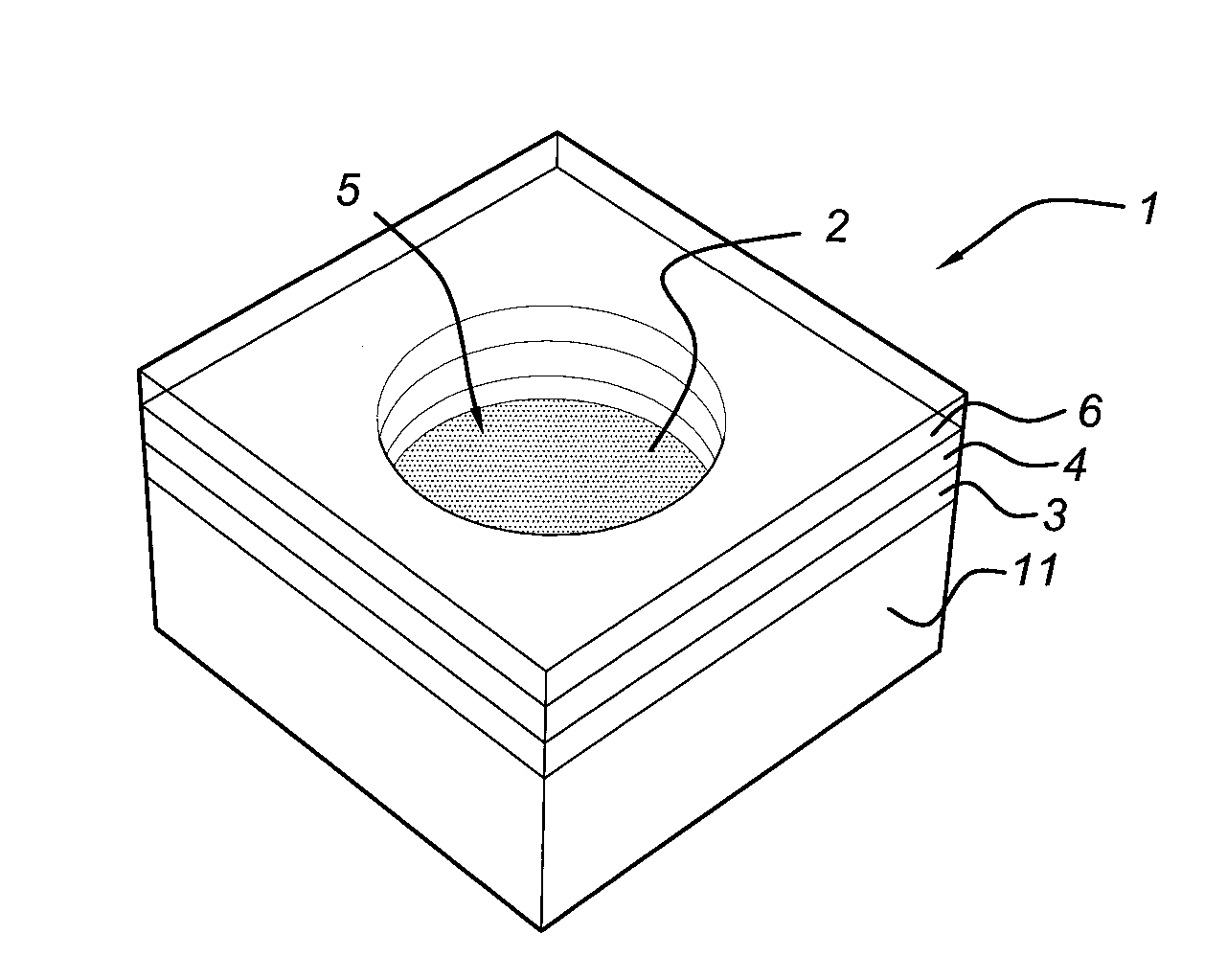Terahertz radiation detection using micro-plasma
a technology of terahertz radiation and micro-plasma, which is applied in the field of detectors for terahertz radiation, a method of detecting terahertz radiation and an image sensor, can solve the problems of not providing the effect of radiation, and achieve the effect of cost-effective image sensors
- Summary
- Abstract
- Description
- Claims
- Application Information
AI Technical Summary
Benefits of technology
Problems solved by technology
Method used
Image
Examples
Embodiment Construction
[0024]Imaging techniques for far-infrared radiation in the terahertz (THz) frequency regime have obtained considerable attention in the last decades. Advances in generation and detection of ultra-short THz pulses with a spectrum from a few gigahertz to 3 THz and the interest for non-ionizing radiation for medical and material-probing applications have triggered a fast development of imaging techniques. Most reported THz imaging experiments are based on the coherent detection technique of time domain spectroscopy (TDS). Femto-second lasers are used in combination with lens-coupled semiconductor antennas or the electro-optic effect in ZnTe as THz source and receiver. The transmitted or reflected THz pulse shape is measured and used to reconstruct absorption or phase delay images. Two-dimensional imaging of high-power THz radiation has been demonstrated and used to image moving samples in real time. Using the temporal profile of a reflected pulse, three-dimensional tomograms have been ...
PUM
 Login to View More
Login to View More Abstract
Description
Claims
Application Information
 Login to View More
Login to View More - R&D
- Intellectual Property
- Life Sciences
- Materials
- Tech Scout
- Unparalleled Data Quality
- Higher Quality Content
- 60% Fewer Hallucinations
Browse by: Latest US Patents, China's latest patents, Technical Efficacy Thesaurus, Application Domain, Technology Topic, Popular Technical Reports.
© 2025 PatSnap. All rights reserved.Legal|Privacy policy|Modern Slavery Act Transparency Statement|Sitemap|About US| Contact US: help@patsnap.com



